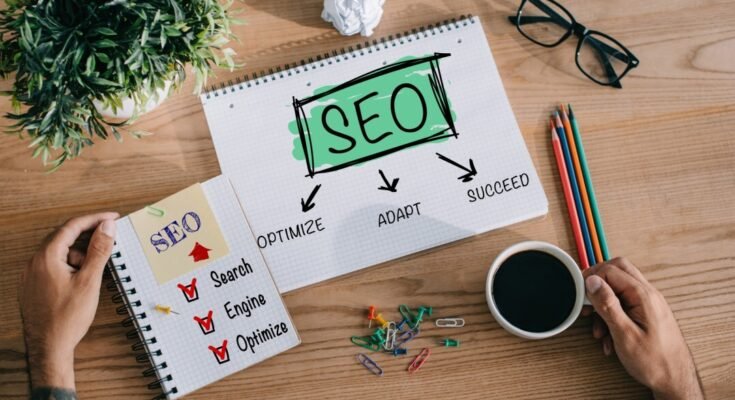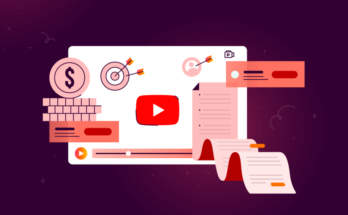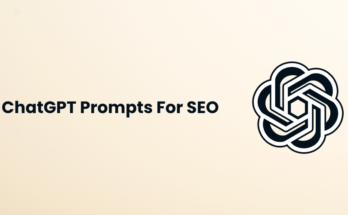“Boost Your Site’s Ranking”
In the fast-evolving digital marketing landscape, staying ahead of the curve with the latest on-page SEO practices is crucial. This blog post will explore the 13 most important on-page SEO factors for 2024 that every digital marketer, SEO specialist, and content creator should know. We’ll provide you with actionable insights and practical tips to optimize your website for better search engine rankings.
E-E-A-T
E-E-A-T stands for Experience, Expertise, Authoritativeness, and Trustworthiness. Search engines like Google prioritize high-quality content that demonstrates these attributes. In 2024, these criteria will be more important than ever.
To boost your website’s E-E-A-T, start by showcasing the qualifications and experience of your content creators. Author bios, credentials, and links to their professional profiles can enhance perceived expertise. Additionally, regularly update your content to reflect the latest information and trends in your industry, solidifying your site’s authority.
Lastly, ensure your site has a clean, professional design and secure browsing experience. Trustworthiness comes not just from credible content but also from a seamless user experience.
Keywords
Keywords remain the backbone of SEO. But it’s not just about stuffing your content with keywords; it’s about strategic placement and natural integration. Focus on long-tail keywords that align with user intent.
Perform keyword research using tools like Ahrefs and SEMrush to identify relevant terms your audience is searching for. Integrate these keywords naturally into your content, headings, and subheadings. Make sure your primary keyword appears in the first 100 words of your article, reinforcing its relevance.
Avoid keyword stuffing, which can lead to penalties. Instead, aim for a keyword density of 1-2% and use synonyms and related terms to enrich your content.
SEO Writing
SEO writing goes beyond inserting keywords. It involves crafting content that’s informative, engaging, and optimized for search engines. In 2024, it’s about delivering value while adhering to SEO best practices.
Start with a compelling headline that includes your primary keyword. Use short paragraphs and bullet points to enhance readability. Remember, search engines favor content that answers users’ queries clearly and concisely.
Include internal links to other relevant articles on your site to keep users engaged longer. End with a strong call to action that encourages further interaction with your content or site.
Freshness
Search engines love fresh content. Regularly updating your site with new and relevant information signals that your content is current and valuable. This is particularly crucial for news sites, blogs, and industries where information rapidly evolves.
Create an editorial calendar to ensure consistent updates. Refresh older posts by adding new insights, statistics, and examples. This not only improves your SEO but also keeps your audience engaged with up-to-date information.
Additionally, highlight the publication or update date on your articles. This transparency builds trust and informs users that your content is current.
Visual Assets
Visual assets like images, infographics, and videos can significantly enhance user engagement and improve on-page SEO. They break up text, making your content more digestible and appealing.
Use high-quality images that are relevant to your content. Optimize them with descriptive file names and alt text that includes relevant keywords. Infographics are great for presenting complex information in an easy-to-understand format, boosting shareability.
Videos can also enhance on-page time, an important ranking factor. Embed relevant videos and include transcripts to make your content accessible and SEO-friendly.
Title Tags
Title tags are critical for both SEO and user experience. They appear in search engine results and browser tabs, influencing click-through rates and first impressions.
Craft concise, compelling title tags that include your primary keyword. Aim for a length of 50-60 characters to ensure they display properly in search results. Avoid keyword stuffing and focus on creating a title that accurately reflects your content.
Additionally, use power words like “ultimate,” “guide,” or “secrets” to make your title more enticing. A well-crafted title tag can significantly boost your organic traffic.
Meta Description
Meta descriptions provide a brief summary of your content in search engine results. They don’t directly impact rankings but play a crucial role in attracting clicks.
Write clear, compelling meta descriptions that incorporate your primary keyword. Aim for a length of 150-160 characters. Highlight the benefits of your content and include a call to action to encourage users to click through.
While meta descriptions don’t influence rankings directly, a higher click-through rate can positively impact your SEO.
Image Optimization
Optimizing images goes beyond adding alt text. In 2024, it’s about ensuring fast load times and enhancing accessibility.
Use compressed image files to reduce load times without sacrificing quality. Tools like TinyPNG can help compress images without losing clarity. Always include descriptive alt text that incorporates relevant keywords, improving accessibility and SEO.
Additionally, consider using modern formats like WebP for faster load times. Optimized images contribute to a better user experience and higher search engine rankings.
Geotagging (For Local Search)
For businesses targeting local customers, geotagging is essential. It helps search engines understand the geographical relevance of your content, improving local search visibility.
Add location-specific keywords to your content, title tags, and meta descriptions. Use tools like Google My Business to manage your local listings and ensure your business information is accurate and up to date.
Encourage customer reviews and include location-based schema markup to further boost your local SEO efforts.
Site Speed
Site speed is a critical ranking factor. Slow load times can increase bounce rates, negatively impacting your SEO. In 2024, a fast-loading site is more important than ever.
Use tools like Google PageSpeed Insights to identify areas for improvement. Optimize images, leverage browser caching, and minify CSS and JavaScript files for faster load times. Consider using a Content Delivery Network (CDN) to distribute your content more efficiently.
A faster site not only improves SEO but also enhances the overall user experience, keeping visitors engaged longer.
Responsive Design
With mobile traffic surpassing desktop, having a responsive design is crucial. It ensures your site looks and functions well on all devices, improving user experience and SEO.
Use a mobile-friendly design that adapts to different screen sizes. Test your site’s responsiveness with tools like Google’s Mobile-Friendly Test. Ensure your content is easily readable on smaller screens, with clickable elements that are easy to interact with.
Responsive design not only improves SEO but also caters to a growing mobile audience, keeping your site accessible to all users.
URL Structure
A clean, descriptive URL structure helps search engines understand your content and improves user experience. In 2024, focus on creating URLs that are concise and keyword-rich.
Use hyphens to separate words and avoid using special characters. Keep URLs short and descriptive, reflecting the content of the page. Include relevant keywords naturally within the URL.
A well-structured URL not only improves SEO but also makes your links more attractive and clickable for users.
Links
Internal and external links are crucial for on-page SEO. They help search engines understand the context of your content and provide additional value to users.
Use internal links to guide users to related content on your site. This keeps users engaged longer and helps distribute link equity across your pages. Use descriptive anchor text that includes relevant keywords.
External links to reputable sources add credibility to your content. They show search engines that your content is well-researched and valuable.
On-Page SEO Vs. Off-Page SEO
While on-page SEO focuses on optimizing elements within your website, off-page SEO involves external factors like backlinks and social signals. Both are crucial for a comprehensive SEO strategy.
On-page SEO gives you control over your content and user experience, directly impacting how search engines perceive your site. Off-page SEO builds credibility and authority through external endorsements.
A balanced approach, combining both on-page and off-page SEO, will yield the best results. Focus on creating high-quality content and building relationships with reputable sites for optimal SEO performance.
Conclusion
Mastering on-page SEO in 2024 is essential for digital marketers, SEO specialists, and content creators aiming to boost their site’s ranking. By focusing on these 13 key factors—E-E-A-T, keywords, SEO writing, freshness, visual assets, title tags, meta descriptions, image optimization, geotagging, site speed, responsive design, URL structure, and links—you can create a robust on-page SEO strategy.
Remember, SEO is an ongoing process. Regularly update your content, monitor your performance, and adapt to changing algorithms and trends. By staying ahead of the curve, you’ll not only improve your search engine rankings but also provide a better experience for your users.
For those ready to take their SEO game to the next level, consider exploring additional resources and tools. Happy optimizing!




